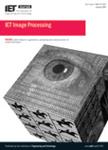版权所有:内蒙古大学图书馆 技术提供:维普资讯• 智图
内蒙古自治区呼和浩特市赛罕区大学西街235号 邮编: 010021

作者机构:Yunnan Univ Engn Res Ctr Cyberspace Kunming 650000 Peoples R China Yunnan Univ Sch Software Kunming Peoples R China
出 版 物:《IET IMAGE PROCESSING》 (IET Image Proc.)
年 卷 期:2024年第18卷第13期
页 面:3801-3814页
核心收录:
学科分类:0808[工学-电气工程] 1002[医学-临床医学] 08[工学] 0812[工学-计算机科学与技术(可授工学、理学学位)]
基 金:National Natural Science Foundation of China [62101481, 62261060] Yunnan Fundamental Research Projects [202301AW070007, 202201AU070033, 202201AT070112, 202301AU070210, 202401AT070470, 202401AT070474] Major Scientific and Technological Project of Yunnan Province [202202AD080002] Yunnan Province Expert Workstations [202305AF150078]
主 题:image processing neural nets steganography
摘 要:Image hiding is a task that embeds secret images in digital images without being detected. The performance of image hiding has been greatly improved by using the invertible neural network. However, current image hiding methods are less robust in the face of Joint Photographic Experts Group (JPEG) compression. The secret image cannot be extracted from the stego image after JPEG compression of the stego image. Some methods show good robustness for some certain JPEG compression quality factors but poor robustness for other common JPEG compression quality factors. An image-hiding network (RIHINNet) that is robust to all common JPEG compression quality factors is proposed. First of all, the loss function is redesigned;thus, the secret image is hidden as much as possible in the area that is less likely to be changed after JPEG compression. Second, the classifier is designed, which can help the model to select the extractor according to the range of JPEG compression degree. Finally, the interval robustness of the secret image extraction is improved through the design of a denoising module. Experimental results show that this RIHINNet outperforms other state-of-the-art image-hiding methods in the face of JPEG compressed noise with random compression quality factors, with more than 10 dB peak signal-to-noise ratio improvement in secret image recovery on ImageNet, COCO and DIV2K datasets. The loss function is designed to hide the secret image as much as possible in the area that will not change much after JPEG compression, which is helpful to improve the robustness of the model against JPEG compression. The current image-hiding model fails to converge when it is trained robustly for all compression quality factors. Through the design of the classifier, the model can select the extractor according to the range of JPEG compression degree, which can make the model converge while improving the quality of the recovered secret image. The denoising module is designed to improve the